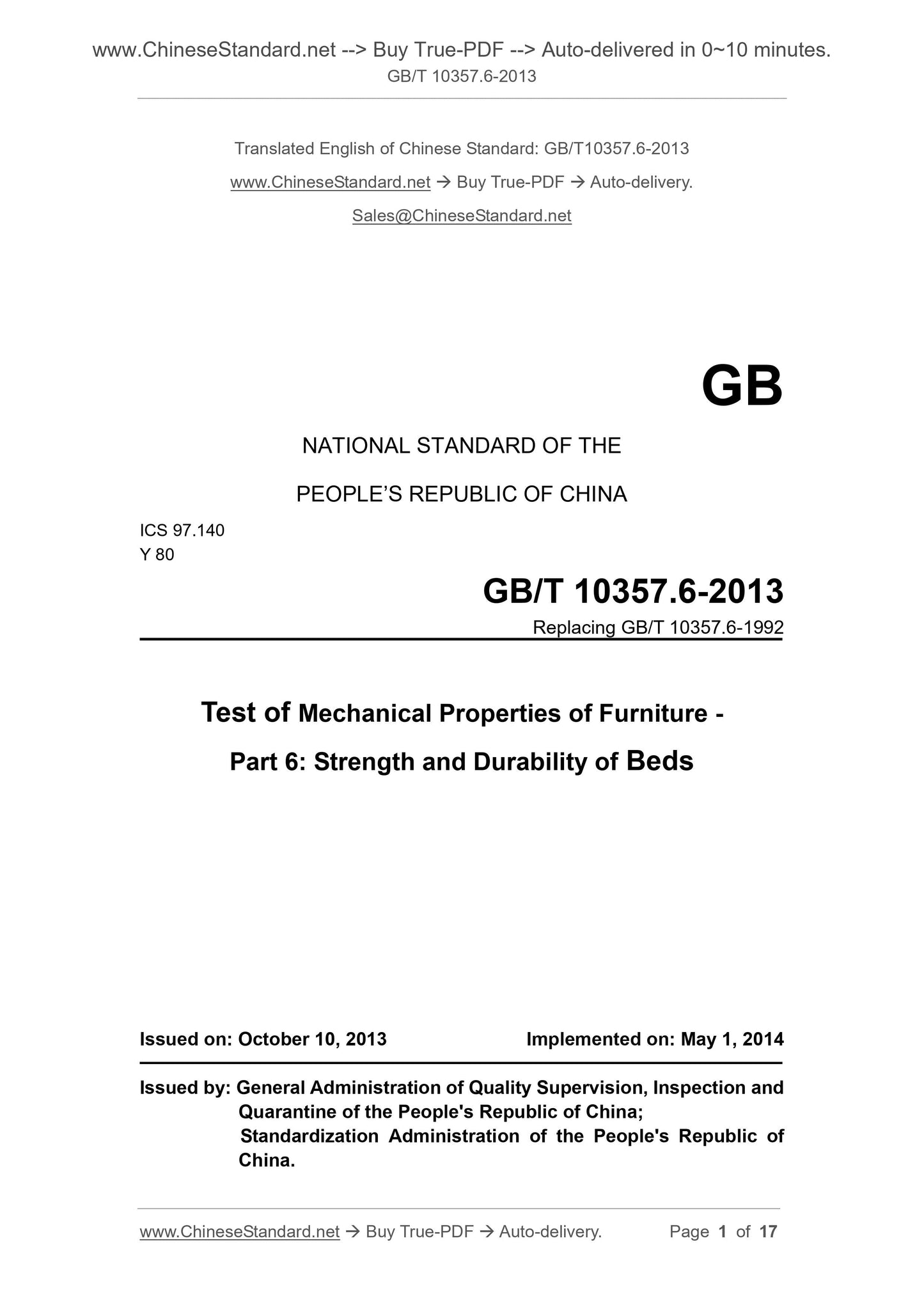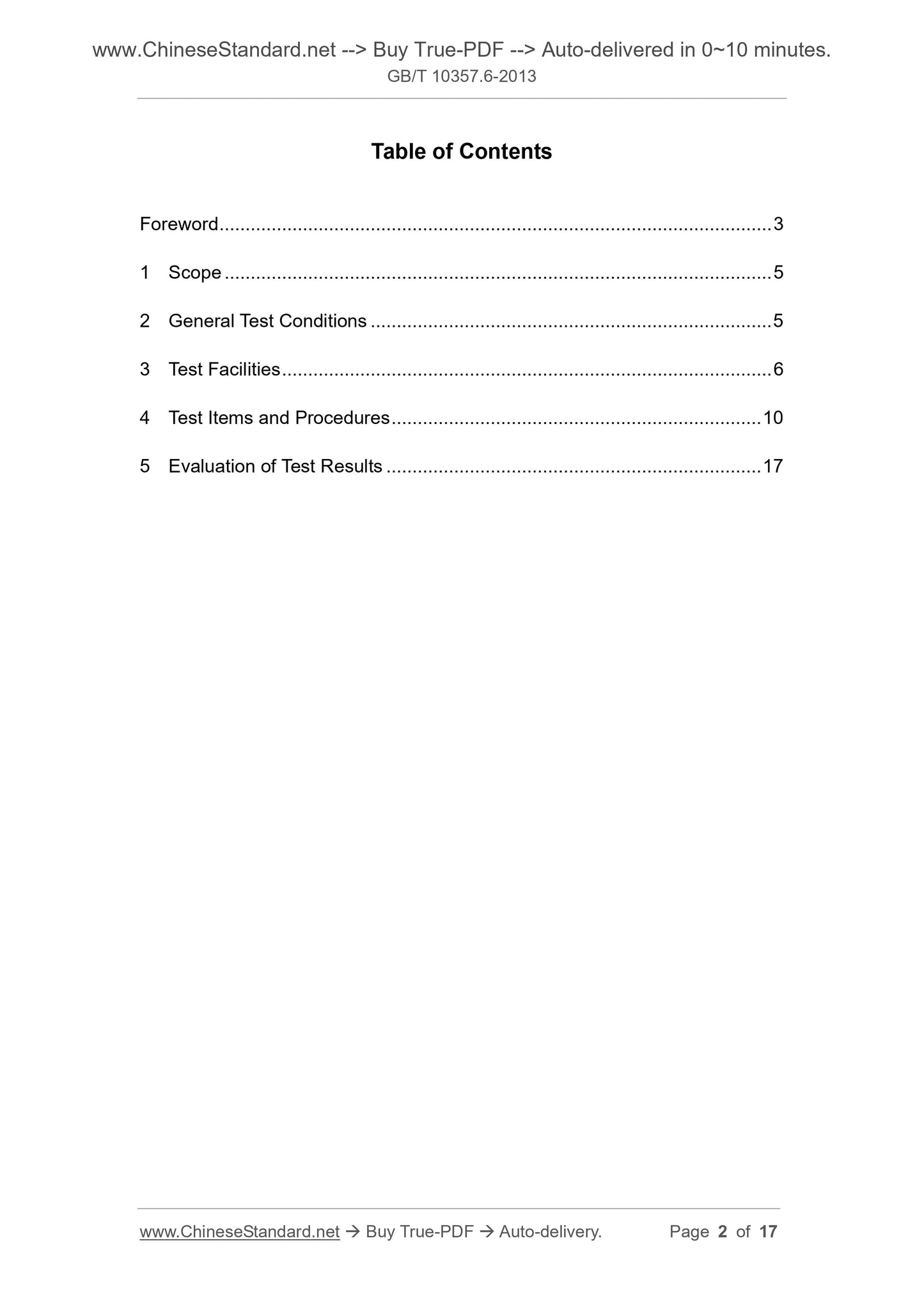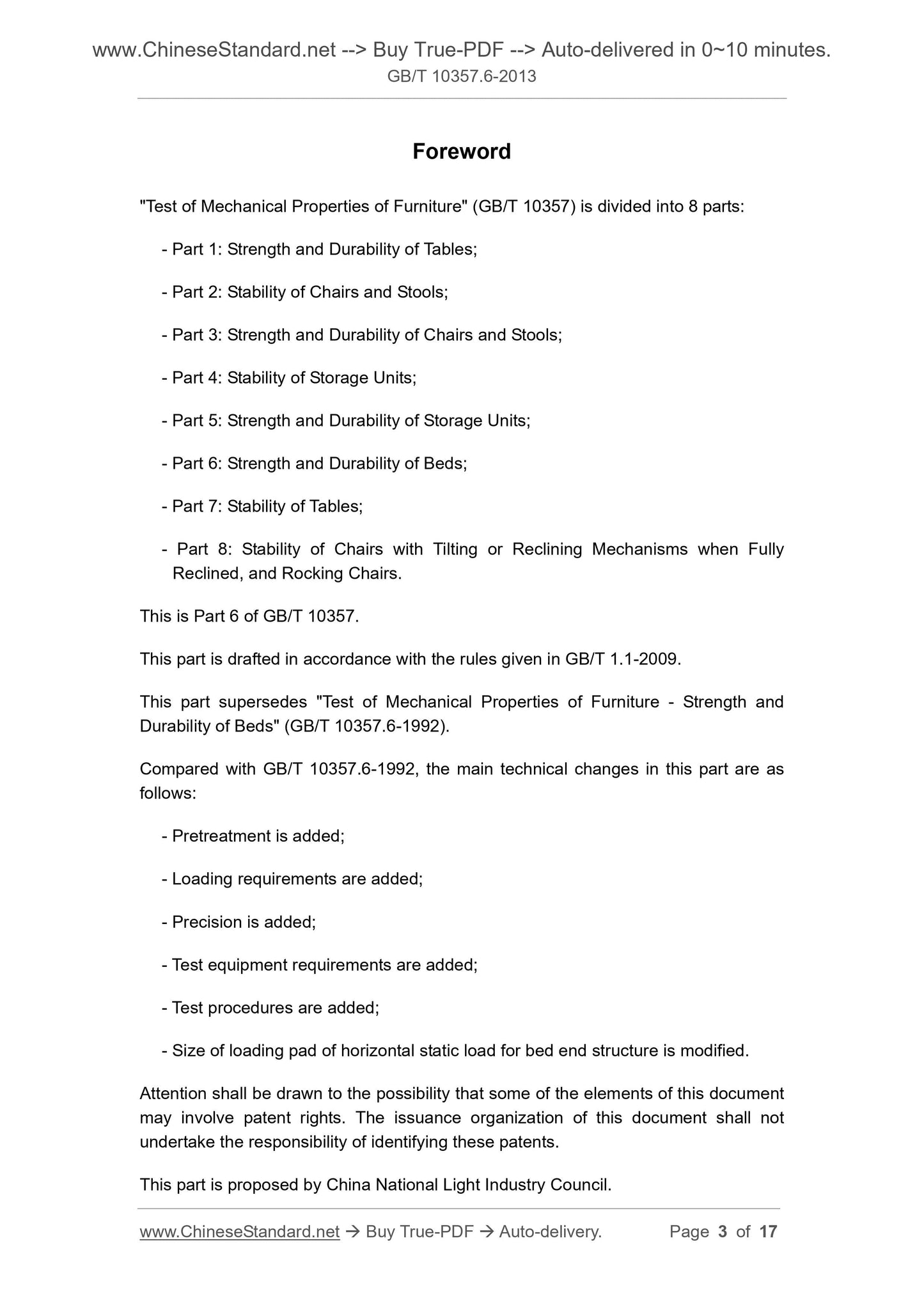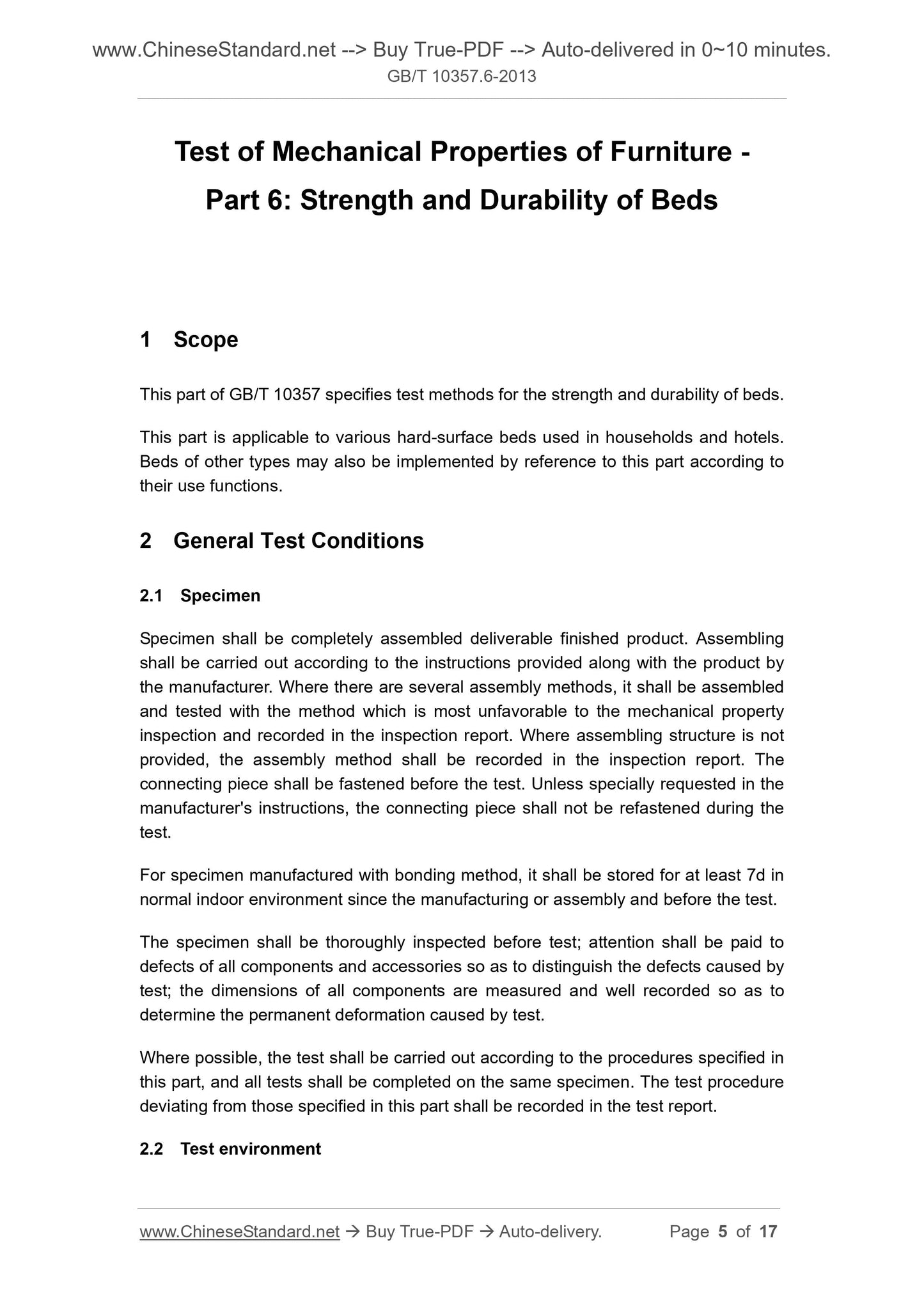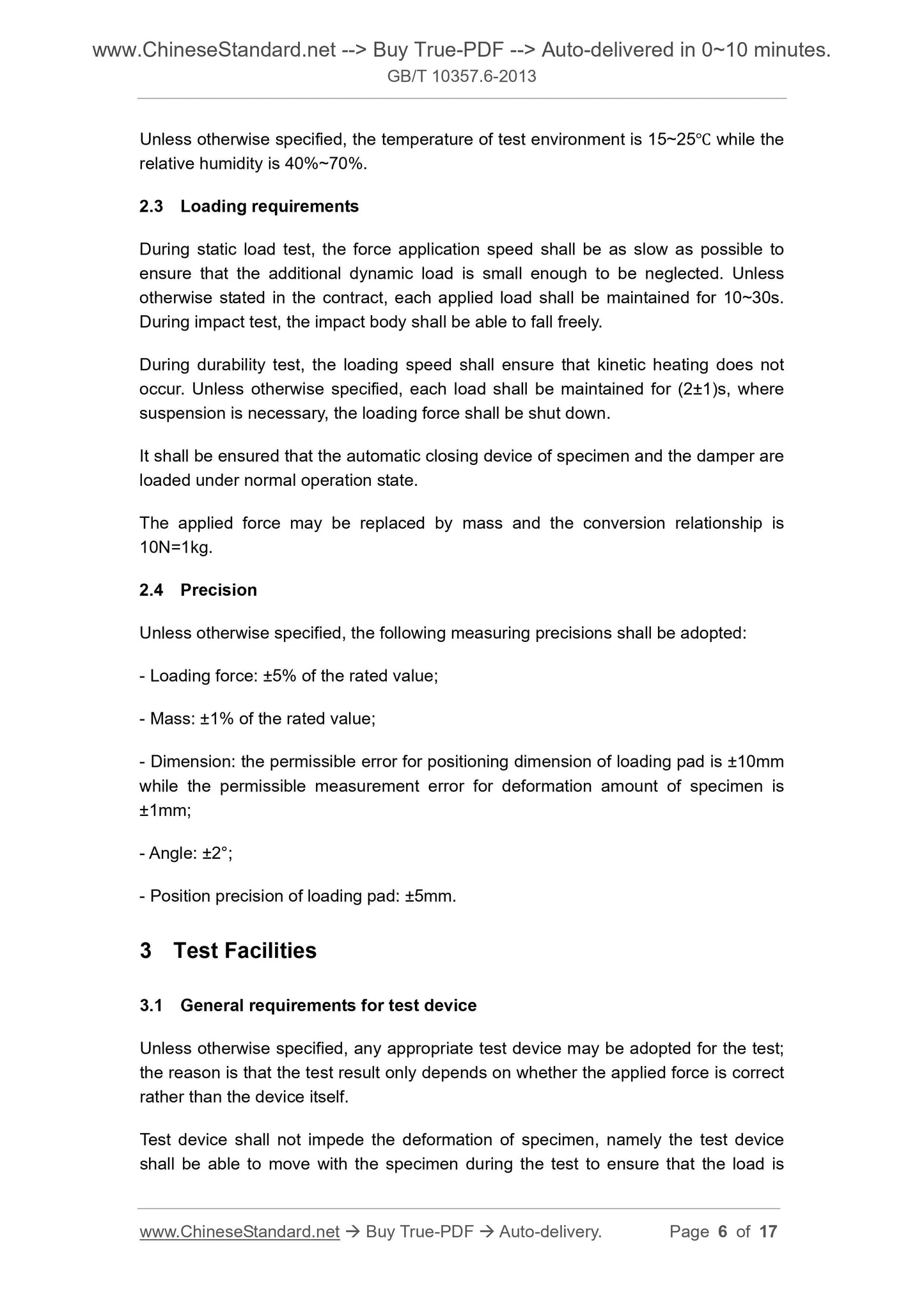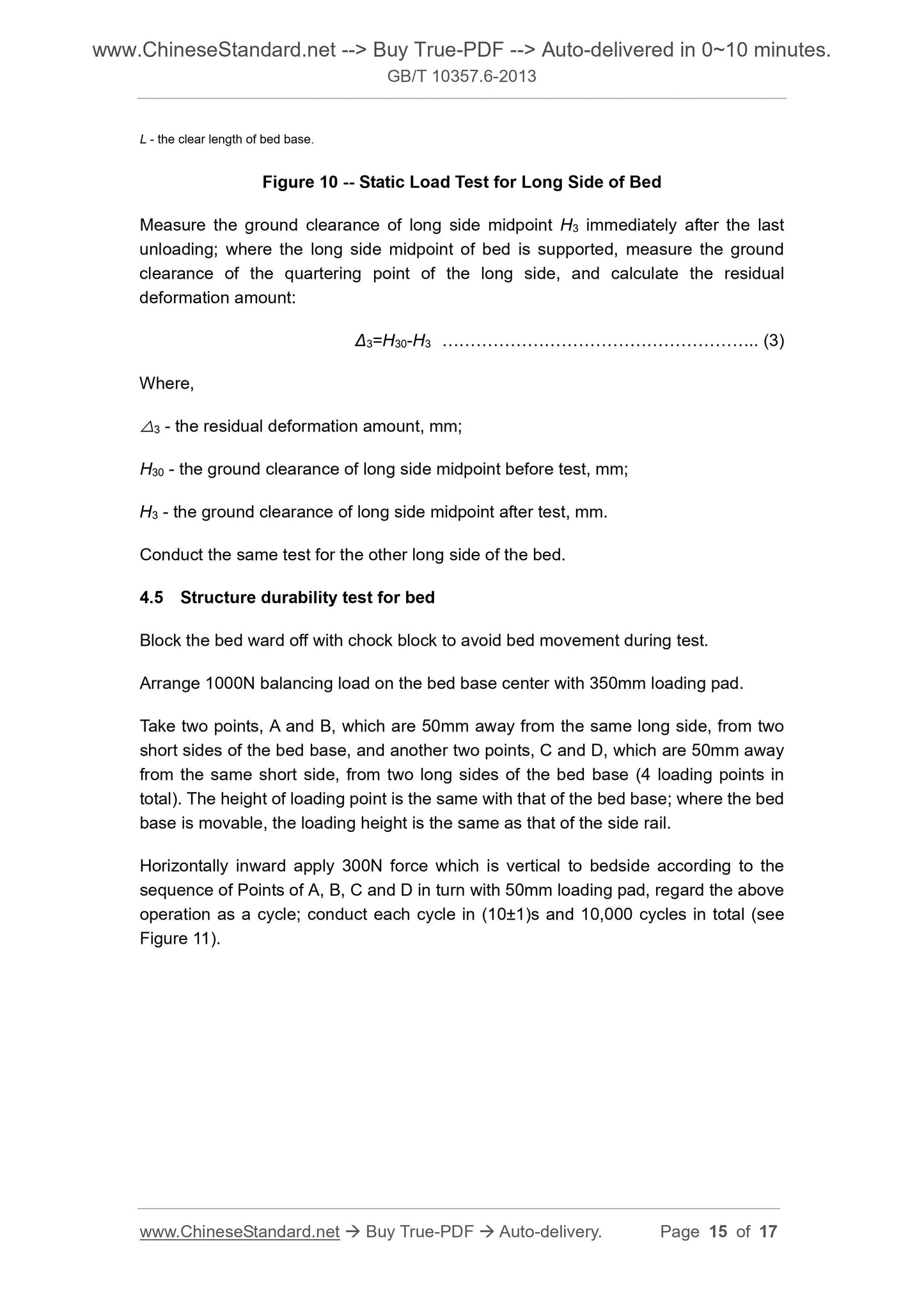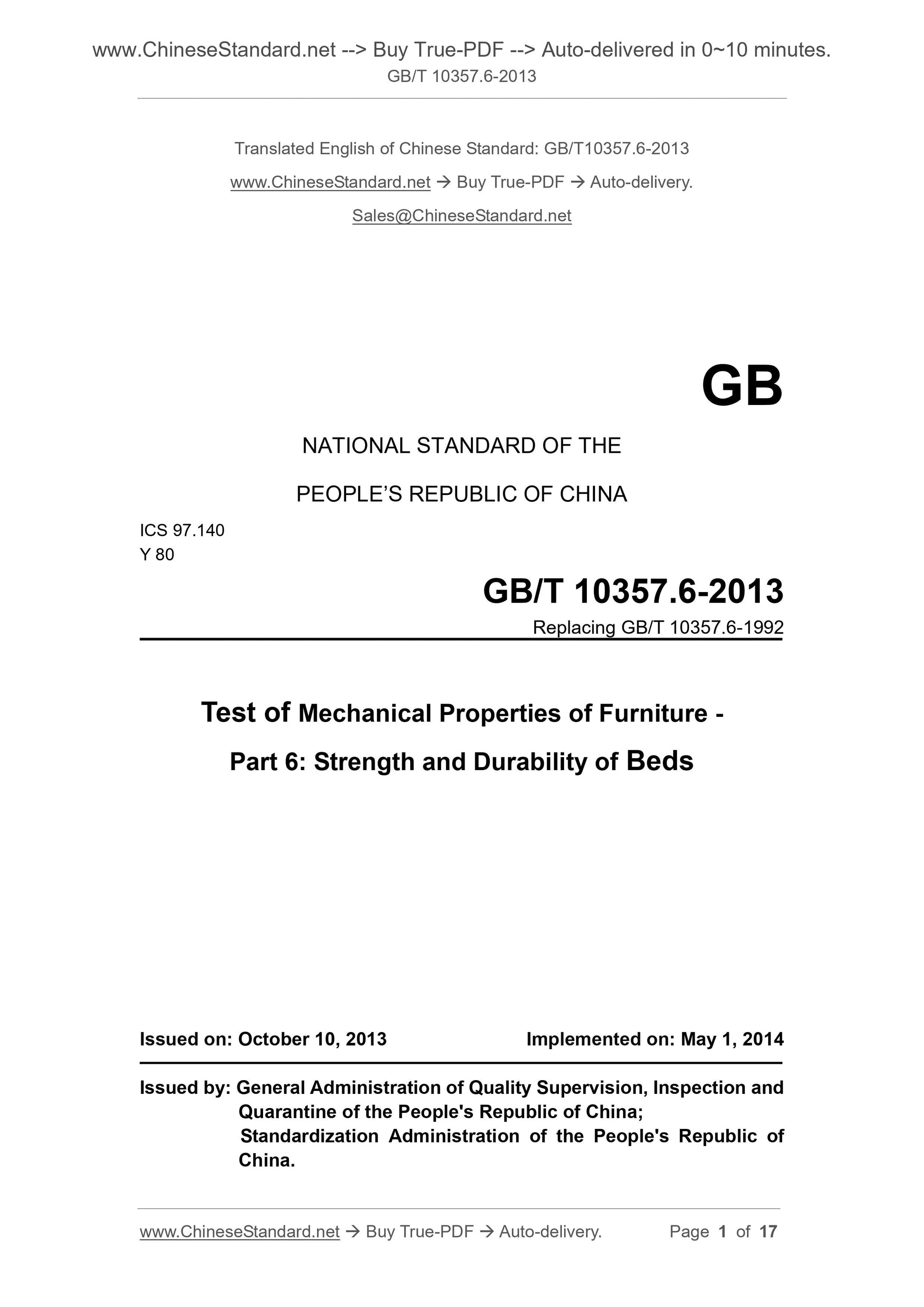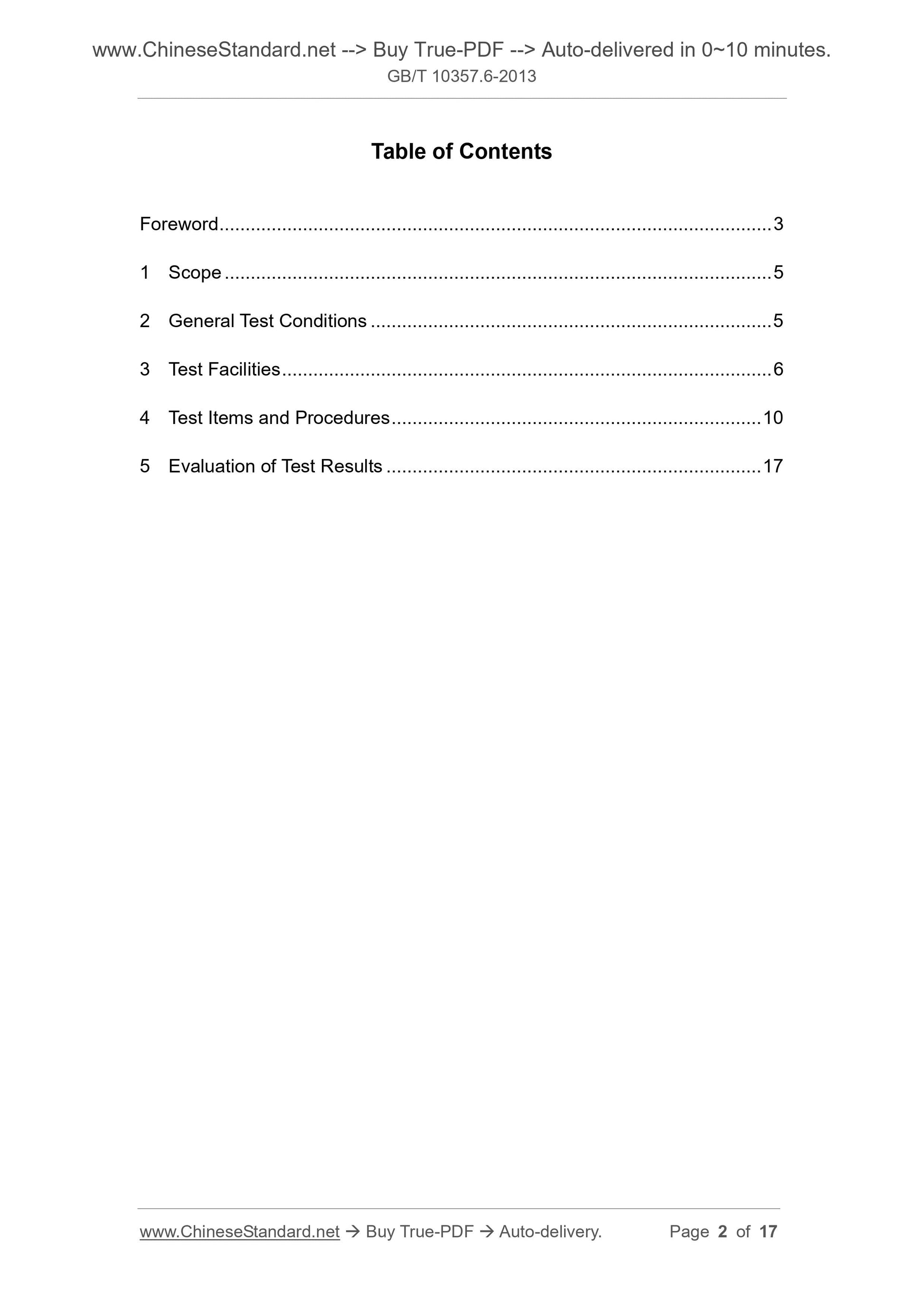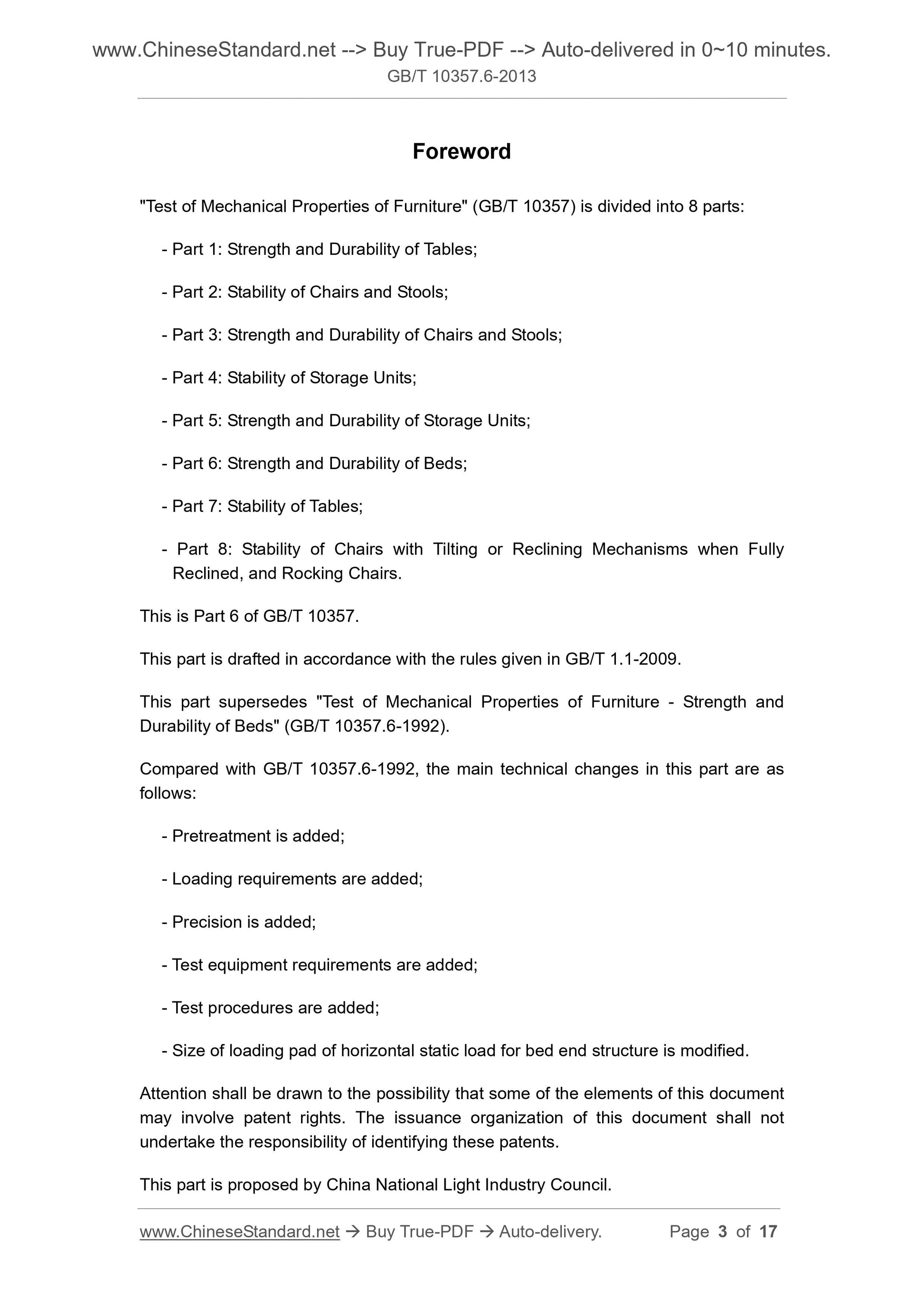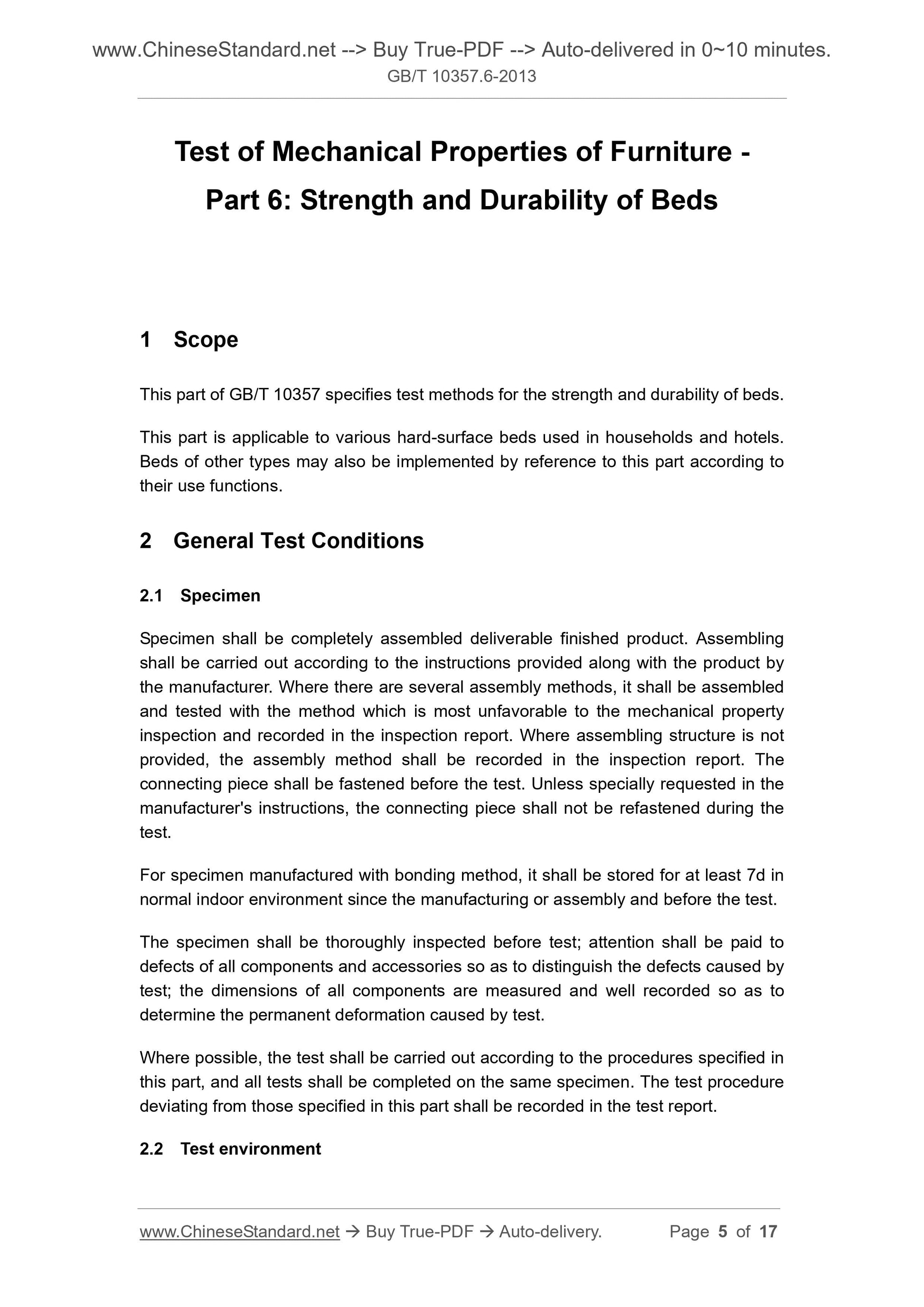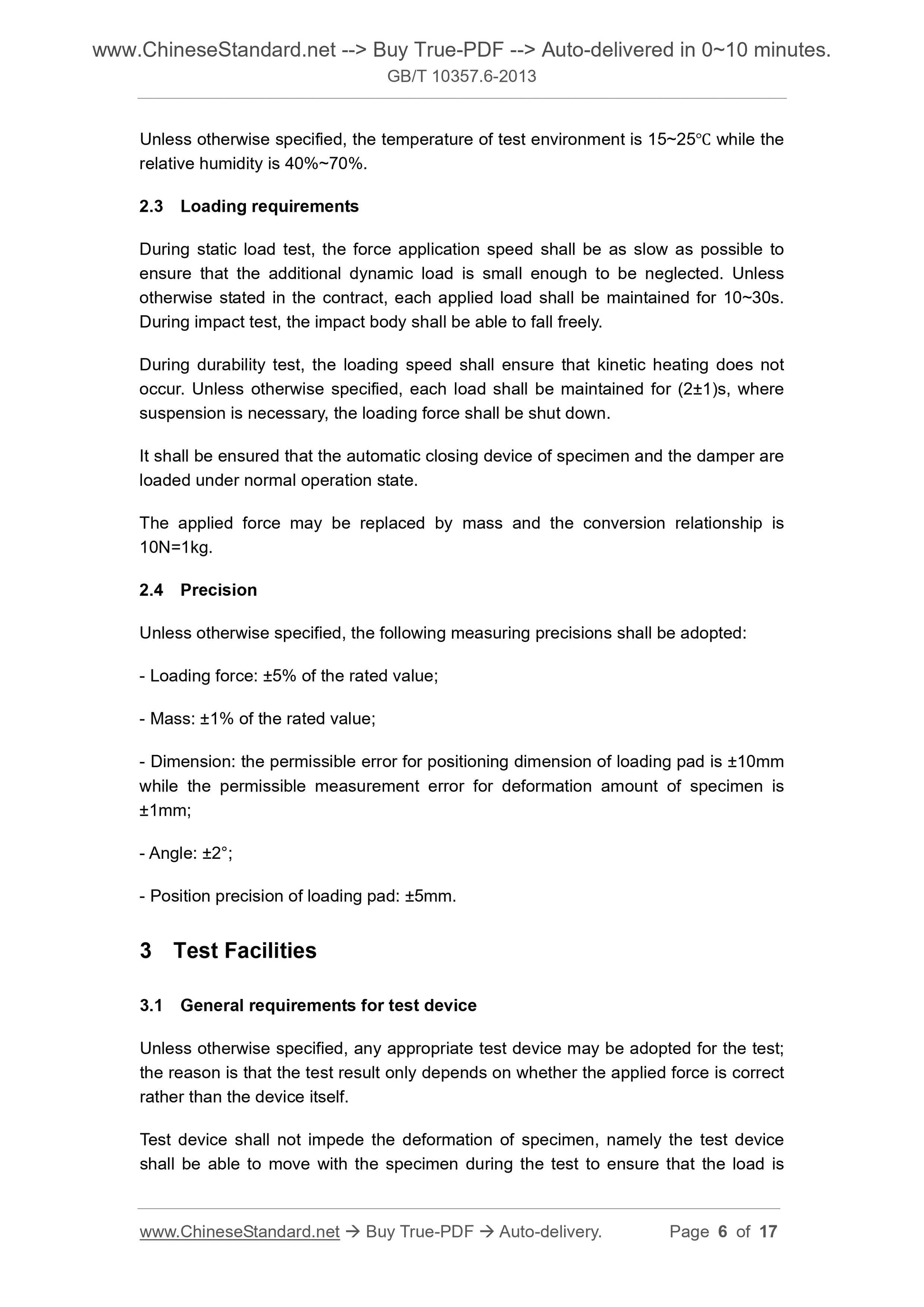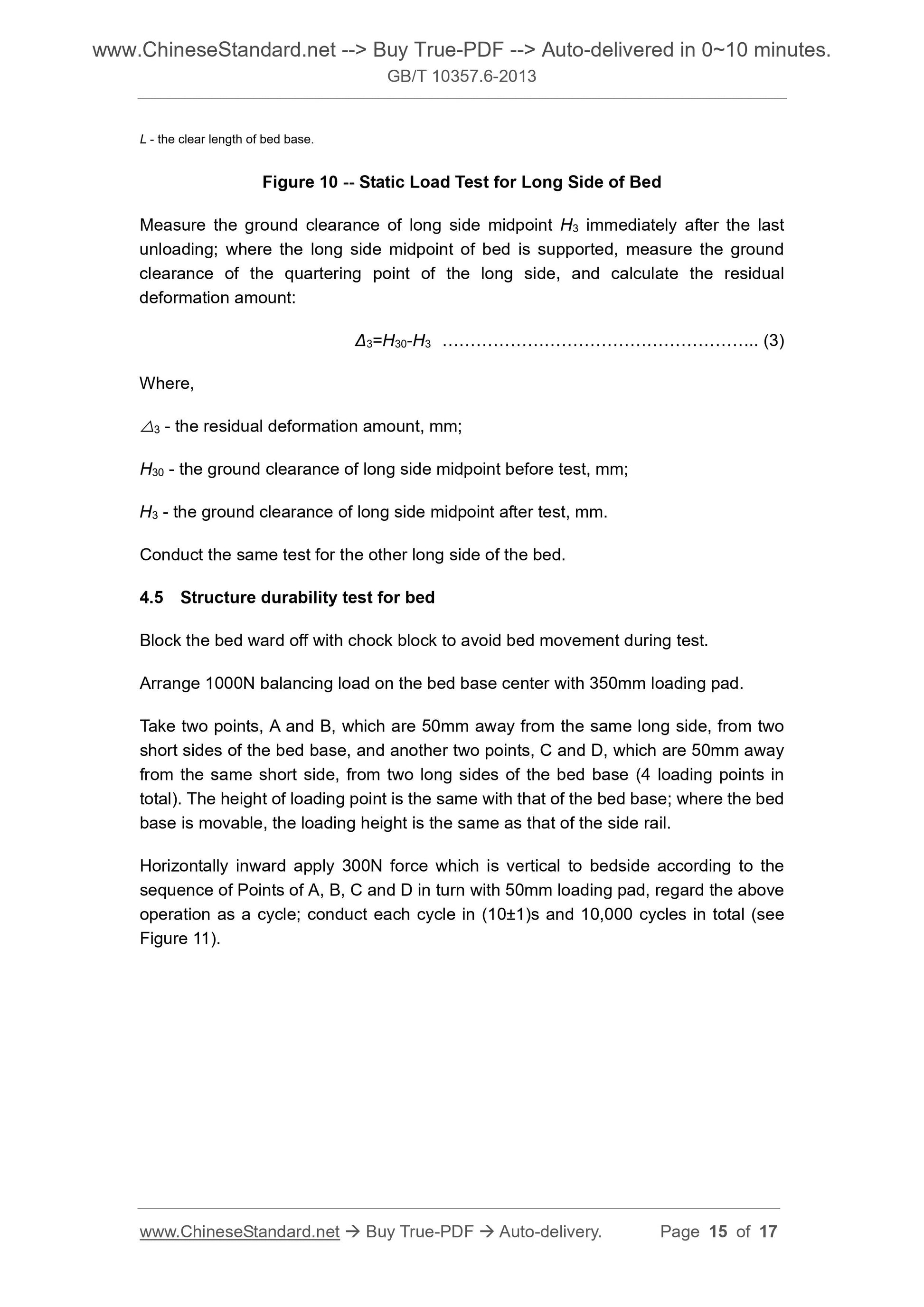1
/
of
6
www.ChineseStandard.us -- Field Test Asia Pte. Ltd.
GB/T 10357.6-2013 English PDF (GB/T10357.6-2013)
GB/T 10357.6-2013 English PDF (GB/T10357.6-2013)
Regular price
$70.00
Regular price
Sale price
$70.00
Unit price
/
per
Shipping calculated at checkout.
Couldn't load pickup availability
GB/T 10357.6-2013: Test of mechanical properties of furniture -- Part 6: Strength and durability of beds
Delivery: 9 seconds. Download (and Email) true-PDF + Invoice.Get Quotation: Click GB/T 10357.6-2013 (Self-service in 1-minute)
Newer / historical versions: GB/T 10357.6-2013
Preview True-PDF
Scope
This part of GB/T 10357 specifies test methods for the strength and durability of beds.This part is applicable to various hard-surface beds used in households and hotels.
Beds of other types may also be implemented by reference to this part according to
their use functions.
Basic Data
| Standard ID | GB/T 10357.6-2013 (GB/T10357.6-2013) |
| Description (Translated English) | Test of mechanical properties of furniture -- Part 6: Strength and durability of beds |
| Sector / Industry | National Standard (Recommended) |
| Classification of Chinese Standard | Y80 |
| Classification of International Standard | 97.140 |
| Word Count Estimation | 12,158 |
| Older Standard (superseded by this standard) | GB/T 10357.6-1992 |
| Regulation (derived from) | National Standards Bulletin No. 20 of 2013 |
| Issuing agency(ies) | General Administration of Quality Supervision, Inspection and Quarantine of the People's Republic of China, Standardization Administration of the People's Republic of China |
| Summary | This standard specifies: single bed strength and endurance test methods. This standard applies to: home, hotels and other places for adults hard pavement single bed. Other types bed, according to its function, also implementation. |
Share
